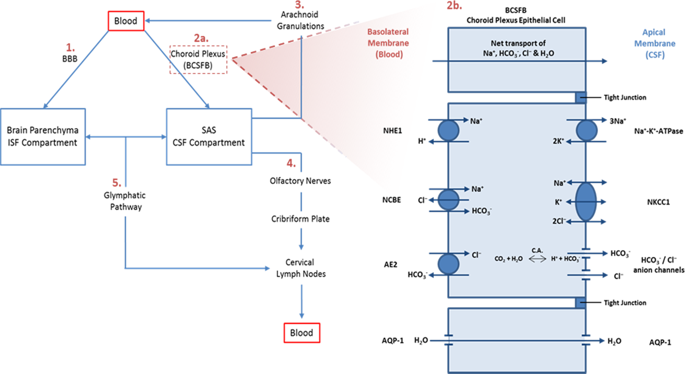Our official English website, www.x-mol.net, welcomes your
feedback! (Note: you will need to create a separate account there.)
Guide to preclinical models used to study the pathophysiology of idiopathic intracranial hypertension
Eye ( IF 2.8 ) Pub Date : 2020-01-02 , DOI: 10.1038/s41433-019-0751-1 Zerin Alimajstorovic 1 , Connar S J Westgate 1, 2 , Rigmor H Jensen 2 , Sajedeh Eftekhari 2 , James Mitchell 1 , Vivek Vijay 1 , Senali Y Seneviratne 1 , Susan P Mollan 3 , Alexandra J Sinclair 1, 3, 4, 5
Eye ( IF 2.8 ) Pub Date : 2020-01-02 , DOI: 10.1038/s41433-019-0751-1 Zerin Alimajstorovic 1 , Connar S J Westgate 1, 2 , Rigmor H Jensen 2 , Sajedeh Eftekhari 2 , James Mitchell 1 , Vivek Vijay 1 , Senali Y Seneviratne 1 , Susan P Mollan 3 , Alexandra J Sinclair 1, 3, 4, 5
Affiliation

|
Idiopathic intracranial hypertension (IIH) is characterised by raised intracranial pressure (ICP) and papilloedema in the absence of an identifiable secondary cause typically occurring in young women with obesity. The impact is considerable with the potential for blindness, chronic disabling headaches, future risk of cardiovascular disease and marked healthcare utilisation. There have been marked advances in our understanding the pathophysiology of IIH including the role of androgen excess. Insight into pathophysiological underpinnings has arisen from astute clinical observations, studies, and an array of preclinical models. This article summarises the current literature pertaining to the pathophysiology of IIH. The current preclinical models relevant to gaining mechanistic insights into IIH are then discussed. In vitro and in vivo models which study CSF secretion and the effect of potentially pathogenic molecules have started to glean important mechanistic insights. These models are also useful to evaluate novel therapeutic targets to abrogate CSF secretion. Importantly, in vitro CSF secretion assays translate into relevant changes in ICP in vivo. Models of CSF absorption pertinent to IIH, are less well established but highly relevant and of future interest. There is no fully developed in vivo model of IIH but this remains an area of importance. Progress is being made to improve our understanding of the underlying aetiology in IIH including the characterisation of disease biomarkers and their mechanistic role in driving disease pathology. Preclinical models, used to evaluate IIH mechanisms are yielding important mechanistic insights. Further work to refine these techniques will provide translatable insights into disease aetiology. 特发性颅内高压 (Idiopathic intracranial hypertension IIH) 以颅内压 (intracranial pressure ICP) 升高和视乳头水肿为特征, 缺乏明确的继发性病因, 常见于肥胖的年轻女性。由于其可能导致失明、慢性致残性头痛、远期心血管疾病风险以及占用过多医疗资源等对社会的影响巨大。 我们对IIH病理生理学机制的理解已有了显著提高, 包括雄激素过量的作用机制。对疾病的病理生理学认识基于精确的临床观察、研究和大量的临床前期模型。 本文总结了现有的关于IIH病理生理学的文献, 并进一步探讨了目前针对IIH发病机制研究的临床前期模型。 用于研究脑脊液分泌和其潜在致病分子作用的体外和体内模型已经展现了重要机制学说的研究前景。这些模型也有助于评估抑制脑脊液分泌的新型治疗靶点。重要的是, 体外脑脊液分泌测定可观察体内的相应ICP变化。IIH相关的脑脊液吸收模型尚不完善, 但其相关性紧密并且具有研究前景。IIH的体内模型尚未成熟, 但其仍是一个重要的领域。 我们对IIH潜在发病机制的认识正在逐步提高, 包括疾病的特征性的生物标记物及其在诱导病理变化中的作用机制。用于评估IIH机制的临床前期模型揭示了重要的发病机制。进一步改进这些技术将为IIH的病因学研究提供理论基础。
中文翻译:

用于研究特发性颅内高压病理生理学的临床前模型指南
特发性颅内高压 (IIH) 的特点是颅内压 (ICP) 升高和视乳头水肿,且没有可识别的继发原因,通常发生在肥胖的年轻女性中。其影响相当大,可能导致失明、慢性致残性头痛、未来患心血管疾病的风险以及显着的医疗保健利用率。我们对 IIH 病理生理学(包括雄激素过多的作用)的理解取得了显着进展。对病理生理学基础的深入了解源于敏锐的临床观察、研究和一系列临床前模型。本文总结了有关 IIH 病理生理学的最新文献。然后讨论了当前与获得 IIH 机制见解相关的临床前模型。研究脑脊液分泌和潜在致病分子影响的体外和体内模型已经开始收集重要的机制见解。这些模型也可用于评估消除脑脊液分泌的新治疗靶点。重要的是,体外 CSF 分泌测定可转化为体内 ICP 的相关变化。与 IIH 相关的 CSF 吸收模型尚未建立,但高度相关且具有未来意义。目前还没有完全成熟的 IIH 体内模型,但这仍然是一个重要领域。我们正在取得进展,以提高我们对 IIH 潜在病因学的理解,包括疾病生物标志物的特征及其在驱动疾病病理学中的机制作用。用于评估 IIH 机制的临床前模型正在产生重要的机制见解。完善这些技术的进一步工作将为疾病病因学提供可转化的见解。特发性颅内高压(特发性颅内高压IIH)以颅内压(ICP)升高和视乳头水肿为特征,缺乏明显的继发性发育,常见于生育的年轻女性。 、慢性致残性头痛、远期心血管疾病风险以及占用过多医疗资源等对社会的影响巨大。我们对IIH病理生理机制的理解已经有了显着提高,包括雄激素过量的作用机制。病理生理学的认识基于精确的临床观察、研究和大量的临床前期模型。本文综述了现有的关于IIH病理生理学的文献,并进一步探讨了目前针对IIH病理生理学研究的临床前期模型。用于研究脑脊液这些模型也正在评估悬浮脑脊液分子的新型治疗野生动物点。相应的ICP变化。IIH相关的脑脊液吸收模型尚不完善,但其相关性严格且具有研究前景。IIH的体内模型尚未成熟,但其仍是一个重要的领域。我们对IIH潜在机制的认识正在逐步进展提高,包括疾病的特征性生物标记物及其在诱导病理变化中的作用机制。用于评估IIH机制的临床前期模型揭示了重要的作用机制。进一步改进这些技术将为IIH的再生学研究提供理论基础。
更新日期:2020-01-02
中文翻译:

用于研究特发性颅内高压病理生理学的临床前模型指南
特发性颅内高压 (IIH) 的特点是颅内压 (ICP) 升高和视乳头水肿,且没有可识别的继发原因,通常发生在肥胖的年轻女性中。其影响相当大,可能导致失明、慢性致残性头痛、未来患心血管疾病的风险以及显着的医疗保健利用率。我们对 IIH 病理生理学(包括雄激素过多的作用)的理解取得了显着进展。对病理生理学基础的深入了解源于敏锐的临床观察、研究和一系列临床前模型。本文总结了有关 IIH 病理生理学的最新文献。然后讨论了当前与获得 IIH 机制见解相关的临床前模型。研究脑脊液分泌和潜在致病分子影响的体外和体内模型已经开始收集重要的机制见解。这些模型也可用于评估消除脑脊液分泌的新治疗靶点。重要的是,体外 CSF 分泌测定可转化为体内 ICP 的相关变化。与 IIH 相关的 CSF 吸收模型尚未建立,但高度相关且具有未来意义。目前还没有完全成熟的 IIH 体内模型,但这仍然是一个重要领域。我们正在取得进展,以提高我们对 IIH 潜在病因学的理解,包括疾病生物标志物的特征及其在驱动疾病病理学中的机制作用。用于评估 IIH 机制的临床前模型正在产生重要的机制见解。完善这些技术的进一步工作将为疾病病因学提供可转化的见解。特发性颅内高压(特发性颅内高压IIH)以颅内压(ICP)升高和视乳头水肿为特征,缺乏明显的继发性发育,常见于生育的年轻女性。 、慢性致残性头痛、远期心血管疾病风险以及占用过多医疗资源等对社会的影响巨大。我们对IIH病理生理机制的理解已经有了显着提高,包括雄激素过量的作用机制。病理生理学的认识基于精确的临床观察、研究和大量的临床前期模型。本文综述了现有的关于IIH病理生理学的文献,并进一步探讨了目前针对IIH病理生理学研究的临床前期模型。用于研究脑脊液这些模型也正在评估悬浮脑脊液分子的新型治疗野生动物点。相应的ICP变化。IIH相关的脑脊液吸收模型尚不完善,但其相关性严格且具有研究前景。IIH的体内模型尚未成熟,但其仍是一个重要的领域。我们对IIH潜在机制的认识正在逐步进展提高,包括疾病的特征性生物标记物及其在诱导病理变化中的作用机制。用于评估IIH机制的临床前期模型揭示了重要的作用机制。进一步改进这些技术将为IIH的再生学研究提供理论基础。











































 京公网安备 11010802027423号
京公网安备 11010802027423号